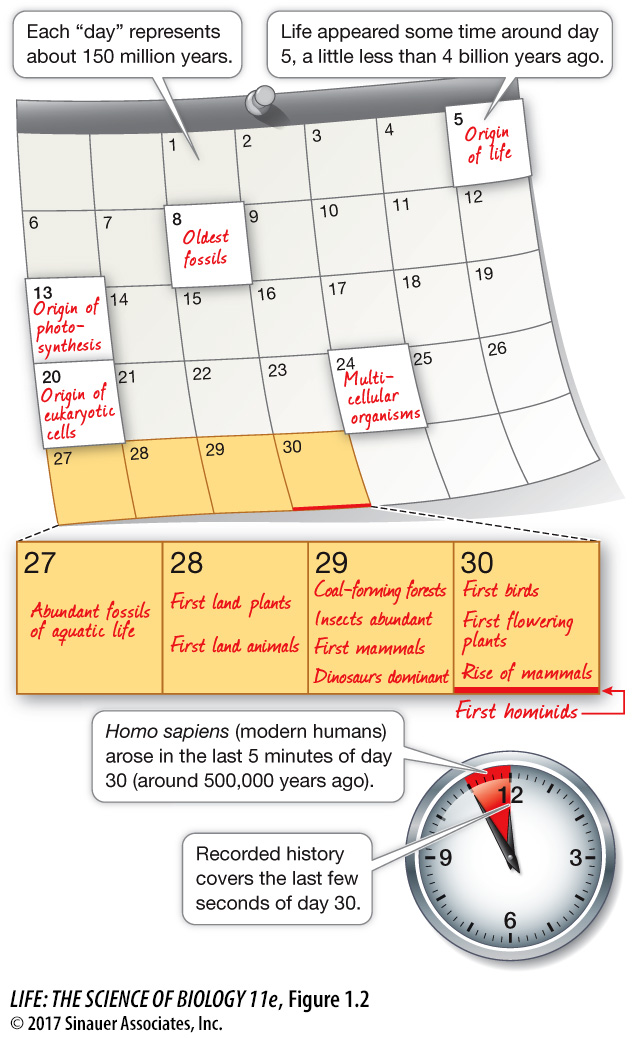Life arose from non-
Earth formed between 4.6 and 4.5 billion years ago, but it was not a place hospitable to life. The cooling of Earth, the formation of surface water, and the evolution of the first life forms took about 600 million years. If we picture the 4.6-

The young Earth’s atmosphere, oceans, and climate were very different than they are today, but experiments simulating those conditions have confirmed that the generation of complex molecules through random physical association of chemicals is possible, even inevitable. The critical step for the evolution of life was the appearance of nucleic acids—molecules that could reproduce themselves and serve as templates for the synthesis of proteins, large molecules with complex but stable shapes. The variation in the shapes of these proteins enabled them to participate in increasing numbers and kinds of chemical reactions with other molecules. These subjects are covered in Part One of this book.